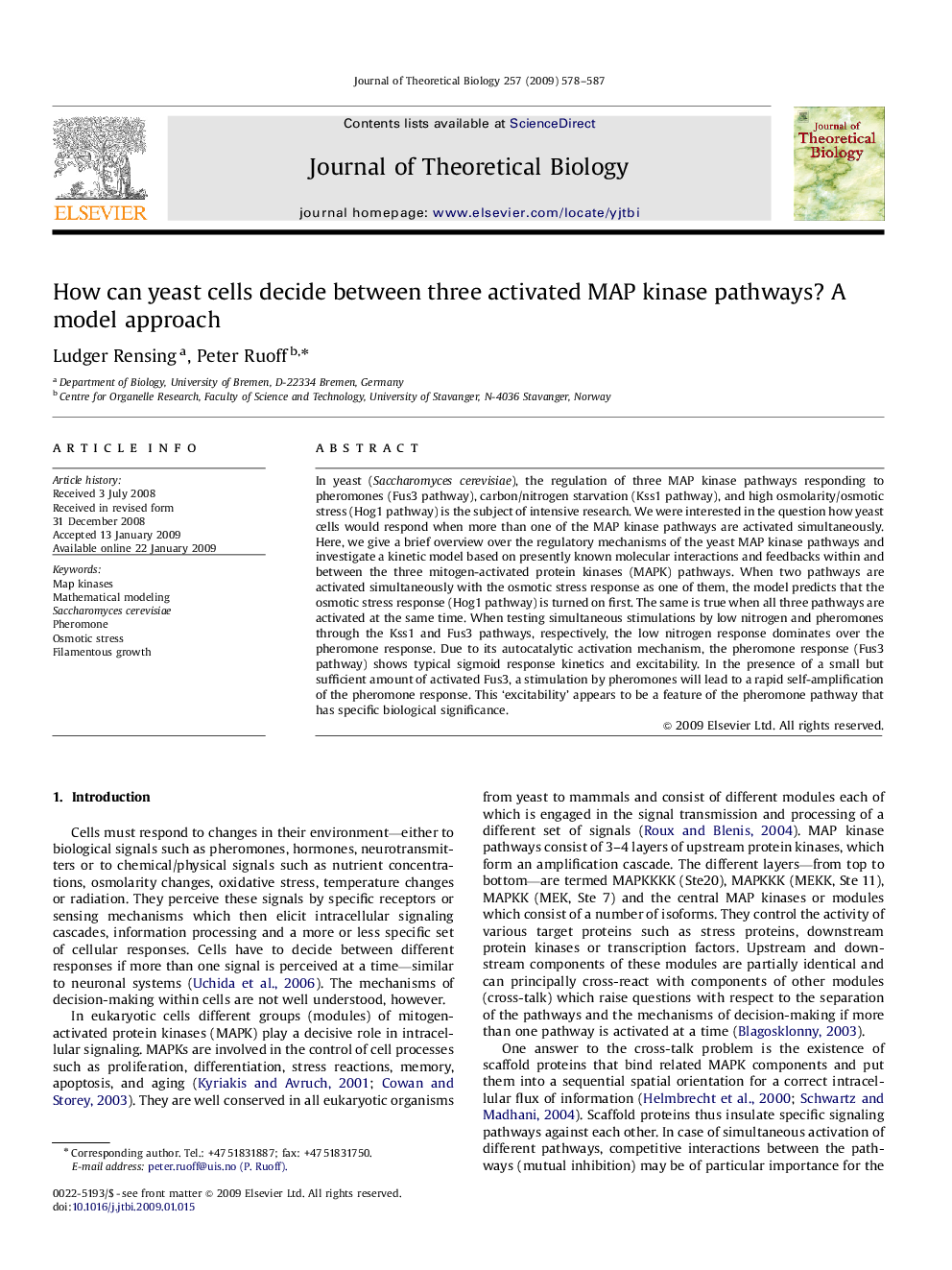| Article ID | Journal | Published Year | Pages | File Type |
|---|---|---|---|---|
| 4498036 | Journal of Theoretical Biology | 2009 | 10 Pages |
In yeast (Saccharomyces cerevisiae), the regulation of three MAP kinase pathways responding to pheromones (Fus3 pathway), carbon/nitrogen starvation (Kss1 pathway), and high osmolarity/osmotic stress (Hog1 pathway) is the subject of intensive research. We were interested in the question how yeast cells would respond when more than one of the MAP kinase pathways are activated simultaneously. Here, we give a brief overview over the regulatory mechanisms of the yeast MAP kinase pathways and investigate a kinetic model based on presently known molecular interactions and feedbacks within and between the three mitogen-activated protein kinases (MAPK) pathways. When two pathways are activated simultaneously with the osmotic stress response as one of them, the model predicts that the osmotic stress response (Hog1 pathway) is turned on first. The same is true when all three pathways are activated at the same time. When testing simultaneous stimulations by low nitrogen and pheromones through the Kss1 and Fus3 pathways, respectively, the low nitrogen response dominates over the pheromone response. Due to its autocatalytic activation mechanism, the pheromone response (Fus3 pathway) shows typical sigmoid response kinetics and excitability. In the presence of a small but sufficient amount of activated Fus3, a stimulation by pheromones will lead to a rapid self-amplification of the pheromone response. This ‘excitability’ appears to be a feature of the pheromone pathway that has specific biological significance.
